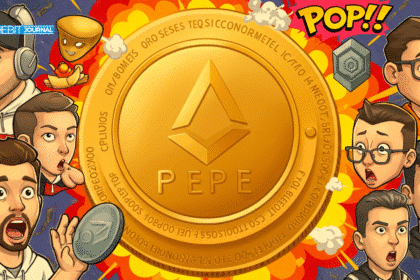Solana co-founder Anatoly Yakovenko has ignited the blockchain world with an innovative proposal for a “Meta Blockchain”, a conceptual framework that could radically reshape how blockchains communicate.
This proposal comes at a time when cross-chain interoperability is more important than ever, and Yakovenko’s vision aims to simplify how developers and applications interact across multiple networks like Solana, Ethereum, and Celestia.
What Is the Meta Blockchain?
The concept, introduced by Yakovenko in a recent technical discussion, involves posting transaction data (referred to as MetaTXs) across various blockchains, including Solana, Ethereum, and Celestia, and then merging this data into a single, provably ordered historical record.
This shared record would allow users and applications to determine the order of events across blockchains in a trustless way, even when those events occurred on entirely different chains.
“You can post a transaction on Solana that includes Ethereum and Celestia headers, and it can be provably shown to occur after events on those chains,” explained Yakovenko.
This mechanism is aimed at reducing the need for centralized oracles and third-party bridges, while empowering developers to access any data availability (DA) layer that offers the most cost-effective and secure solution at a given time.

Why It Matters Now
Blockchain developers and users are currently forced to choose between competing ecosystems, such as Ethereum’s Layer-2 rollups, Cosmos’ zones, or Solana’s high-throughput monolithic design. While bridges exist, they remain risky and often centralized, with a long history of being exploited.
Yakovenko’s Meta Blockchain vision seeks to abstract away these barriers, enabling developers to build apps that seamlessly tap into multiple networks, with consistent data ordering, reduced trust assumptions, and lower friction.
This could not only streamline development workflows but also make DeFi, NFTs, and other cross-chain applications safer and more user-friendly.
Key Features of the Meta Blockchain Proposal
MetaTXs: Transactions that include references (headers or proofs) from multiple chains.
Cross-chain Ordering: Ensures MetaTXs on Solana or other chains can be proven to occur after specific events on Ethereum or Celestia.
DA Flexibility: Developers can pick the cheapest or fastest DA layer for specific workloads — a game-changer for Layer-2 economics.
No Central Authority: The ordering is enforced by shared, verifiable rules rather than a centralized coordinator or oracle.
Still a Concept — But With Growing Momentum
It’s important to note that the Meta Blockchain idea is still in its early stages. There’s no formal whitepaper, codebase, or implementation roadmap yet.
However, the idea has generated significant attention in the developer community, especially among those building on Ethereum rollups, modular chains like Celestia, and Solana’s SVM-based ecosystem.
“This could eliminate the fragmentation issue plaguing today’s Layer-2 chains,” said Ben Sparango, a blockchain researcher and former Solana Foundation contributor.
Other blockchain leaders have praised the approach for emphasizing shared history rather than execution-layer compatibility, aligning more closely with Bitcoin’s trust-minimized ethos.

Industry Trends Favor Cross-Chain Integration
Yakovenko’s timing is no coincidence. 2025 has seen a surge in interoperability-focused projects, including:
Circle’s Cross-Chain Transfer Protocol (CCTP) is going live on Ethereum and Avalanche
Cosmos’ Interchain Security extends shared validator sets
Polygon’s AggLayer merging zk rollups into a shared liquidity zone
LayerZero and Wormhole are raising record funding rounds to build messaging bridges
As chains scale and specialize, the demand for seamless, secure, and cost-efficient inter-chain communication has reached new highs.
Yakovenko’s Meta Blockchain vision fits directly into this trend, but it has a distinct focus on preserving decentralized ordering and trustlessness.
Conclusion
Anatoly Yakovenko’s Meta Blockchain proposal could mark the next major evolution in blockchain interoperability. By enabling provable ordering of events across multiple chains, the concept promises to reduce friction for developers, improve UX for users, and unlock new forms of multi-chain applications.
While the idea is still conceptual, its alignment with the industry’s direction, toward modularity, flexibility, and composability, makes it one to watch in 2025 and beyond.
If adopted, it could very well become the “missing layer” the multi-chain world needs.
Frequently Asked Questions (FAQs)
What is Solana’s Meta Blockchain proposal?
Solana co-founder Anatoly Yakovenko proposed a “Meta Blockchain” — a system that merges transaction data from multiple blockchains into a shared, provable history.
How does the Meta Blockchain improve cross-chain functionality?
It allows applications to reference data from different blockchains (like Ethereum, Celestia, and Solana) and determine the order of events across them without relying on centralized bridges.
Is the Meta Blockchain already live?
No. The idea is still in its conceptual phase. There is no whitepaper or working prototype yet, but it has sparked active discussion in the developer community.
Why is interoperability important for crypto?
Interoperability enables applications and users to interact across different blockchains, making DeFi, NFTs, and cross-chain tools more efficient and secure.
Which other projects are working on cross-chain solutions?
Similar projects include LayerZero, Cosmos IBC, Wormhole, and Polygon AggLayer — all aiming to improve blockchain communication and asset movement.
Glossary of Key Terms
Meta Blockchain: A conceptual layer that records and orders data from multiple blockchains into a unified timeline.
Interoperability: The ability of different blockchain networks to interact and share data seamlessly.
MetaTX (Meta Transaction): A transaction that references block headers or data from multiple chains to create a provable order of events.
Data Availability (DA): A blockchain layer responsible for storing raw transaction data, used in modular chain designs.
Solana: A high-performance Layer-1 blockchain known for its fast transaction speeds and low fees.
Ethereum: A decentralized smart contract platform that supports numerous Layer-2 networks.
Celestia: A modular blockchain focused on data availability and scalability.
Cross-Chain Bridge: A protocol that allows tokens and data to move between different blockchains, often a security risk.
Rollup: A Layer-2 solution that bundles multiple transactions into one and posts the result on the main chain, often used on Ethereum.
Oracles: Third-party services that feed real-world data to smart contracts but can introduce centralization and security concerns.






























